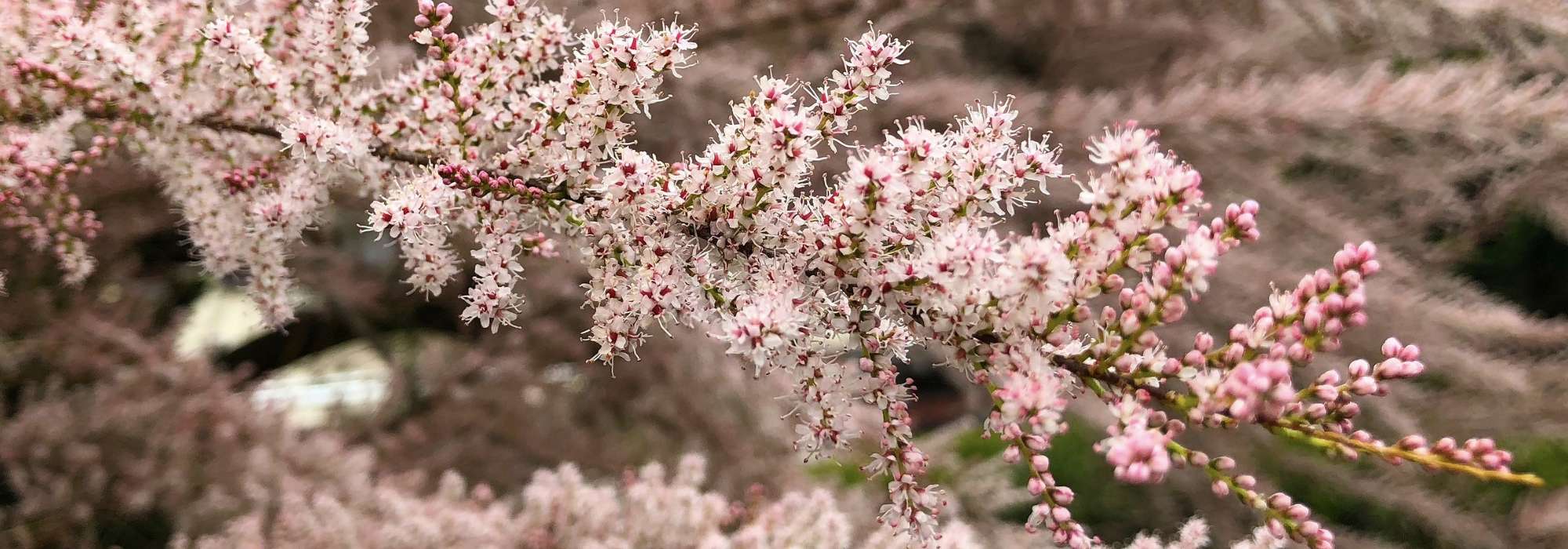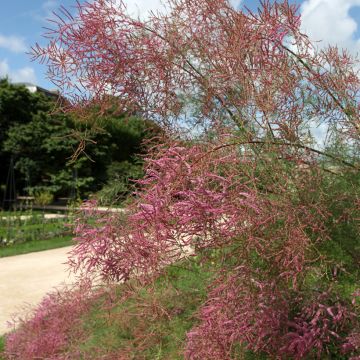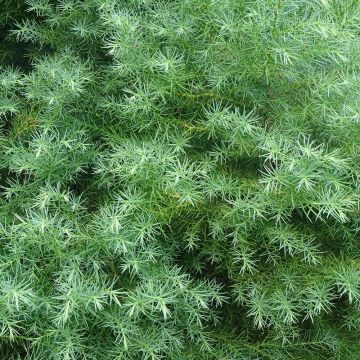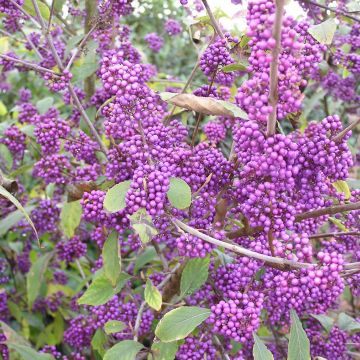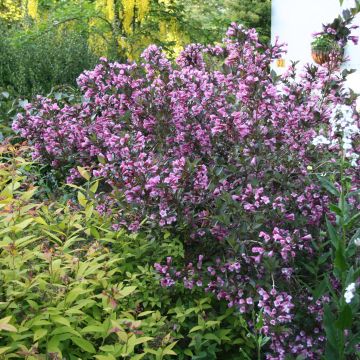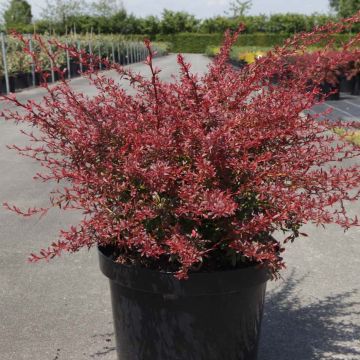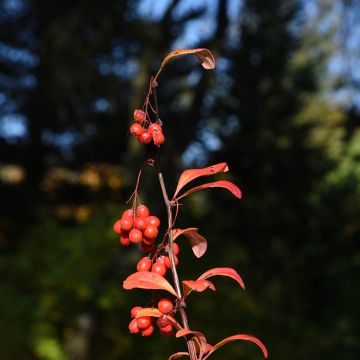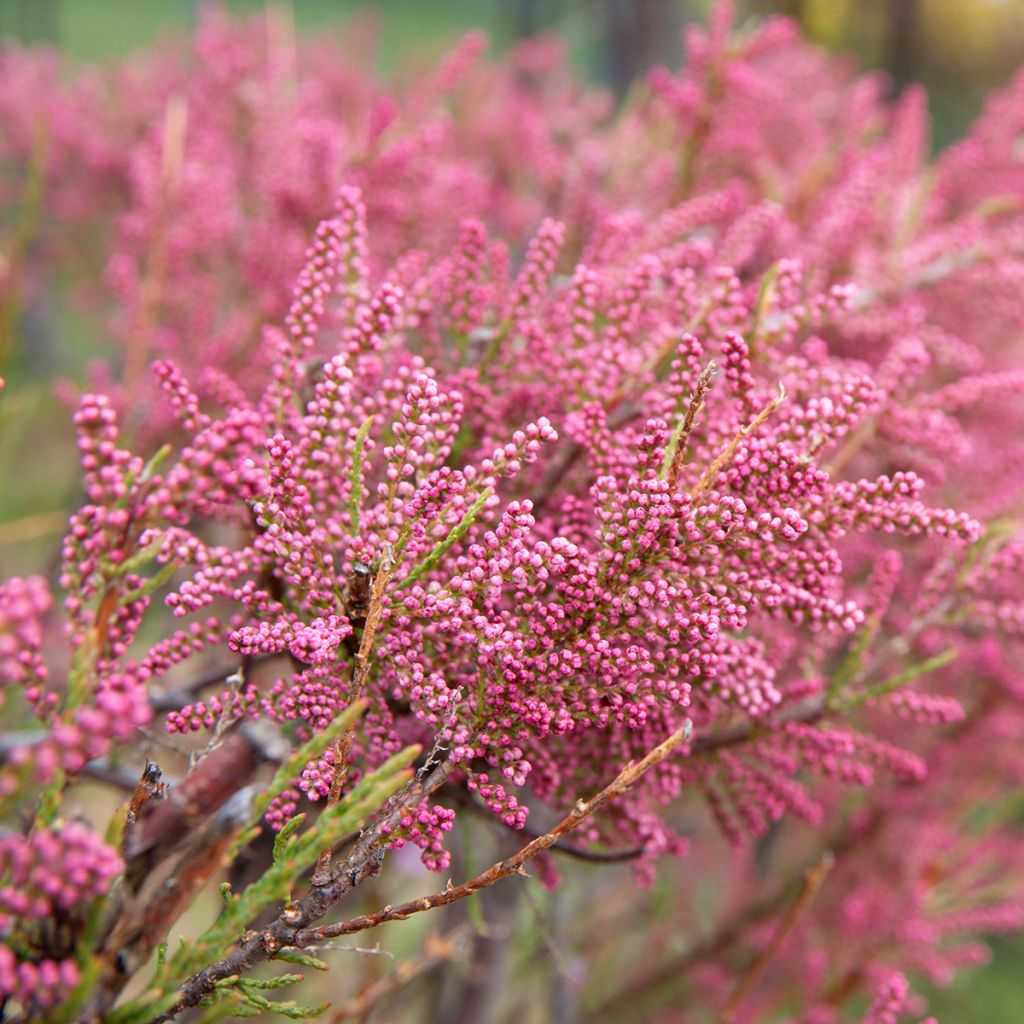

Tamarix gallica - Tamaris français, Tamaris commun
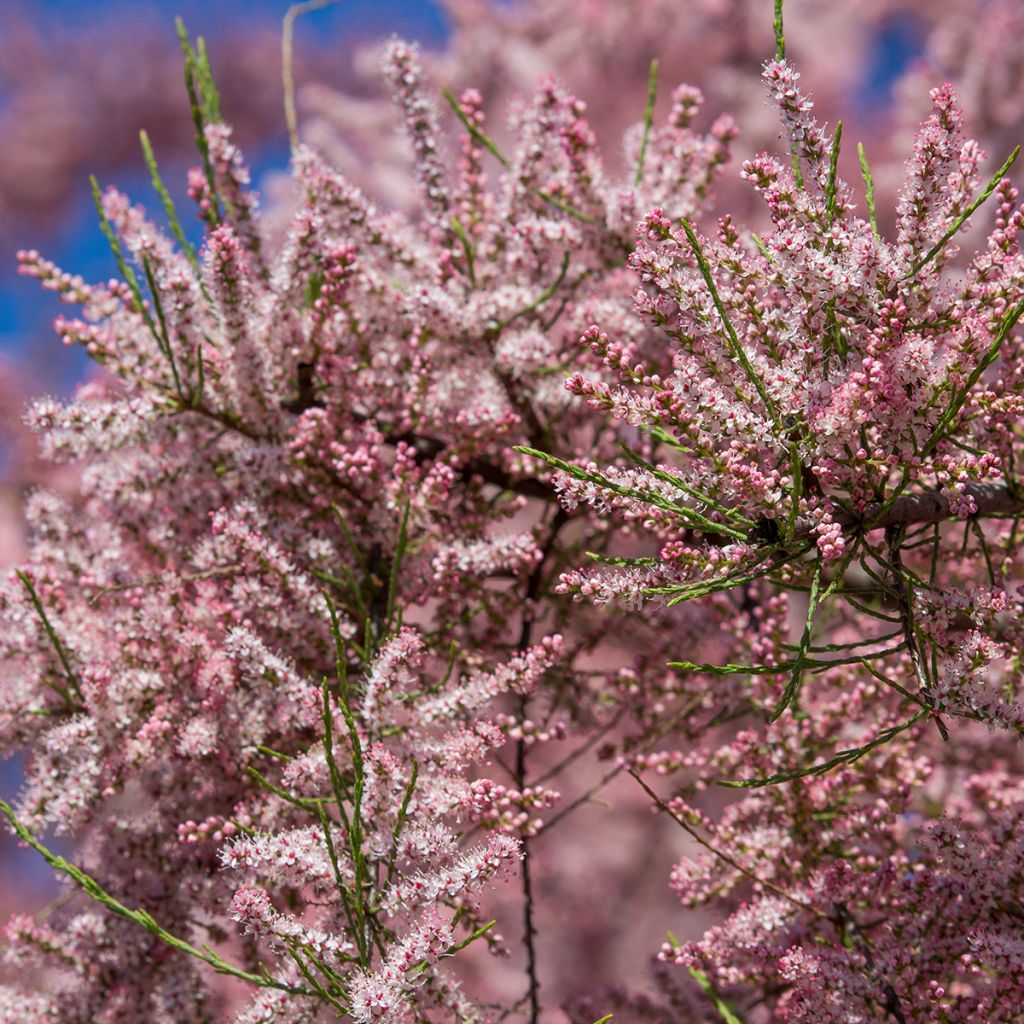

Tamarix gallica - Tamaris français, Tamaris commun
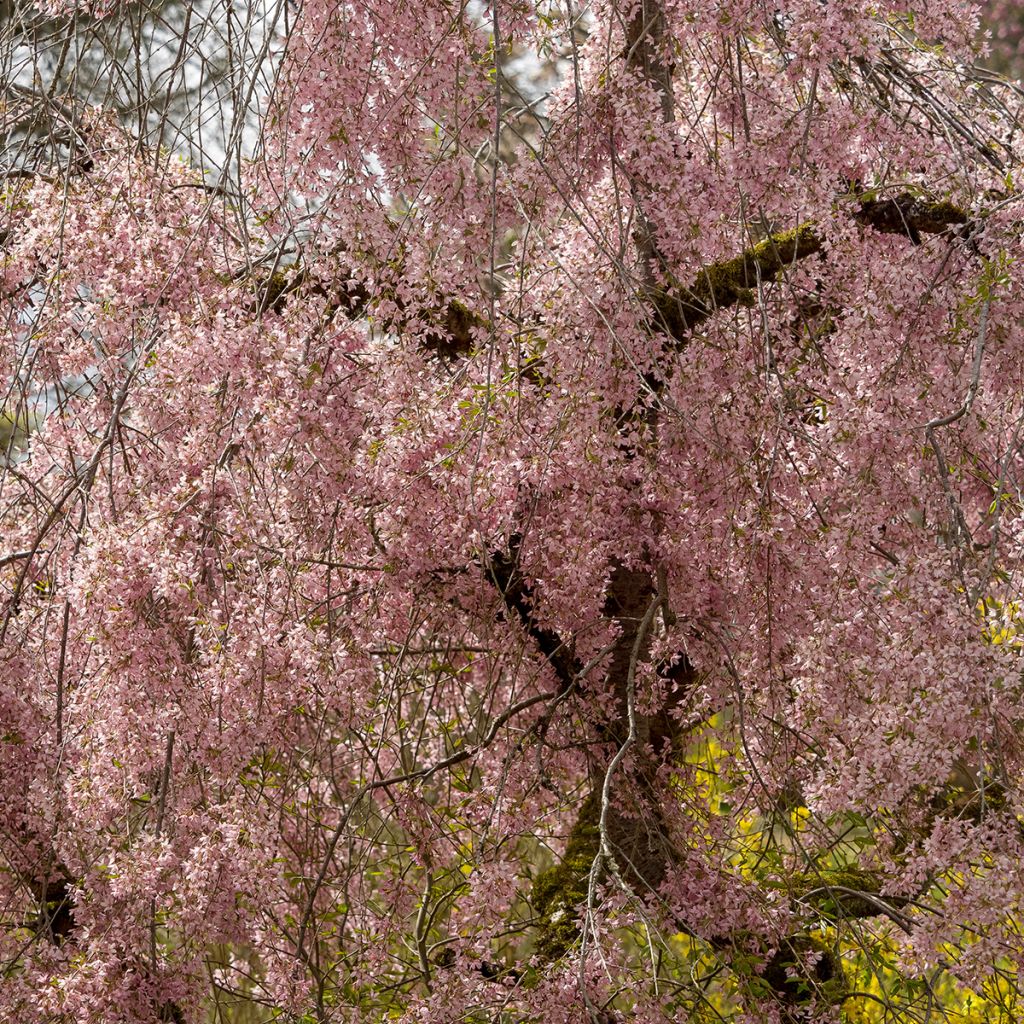

Tamarix gallica - Tamaris français, Tamaris commun
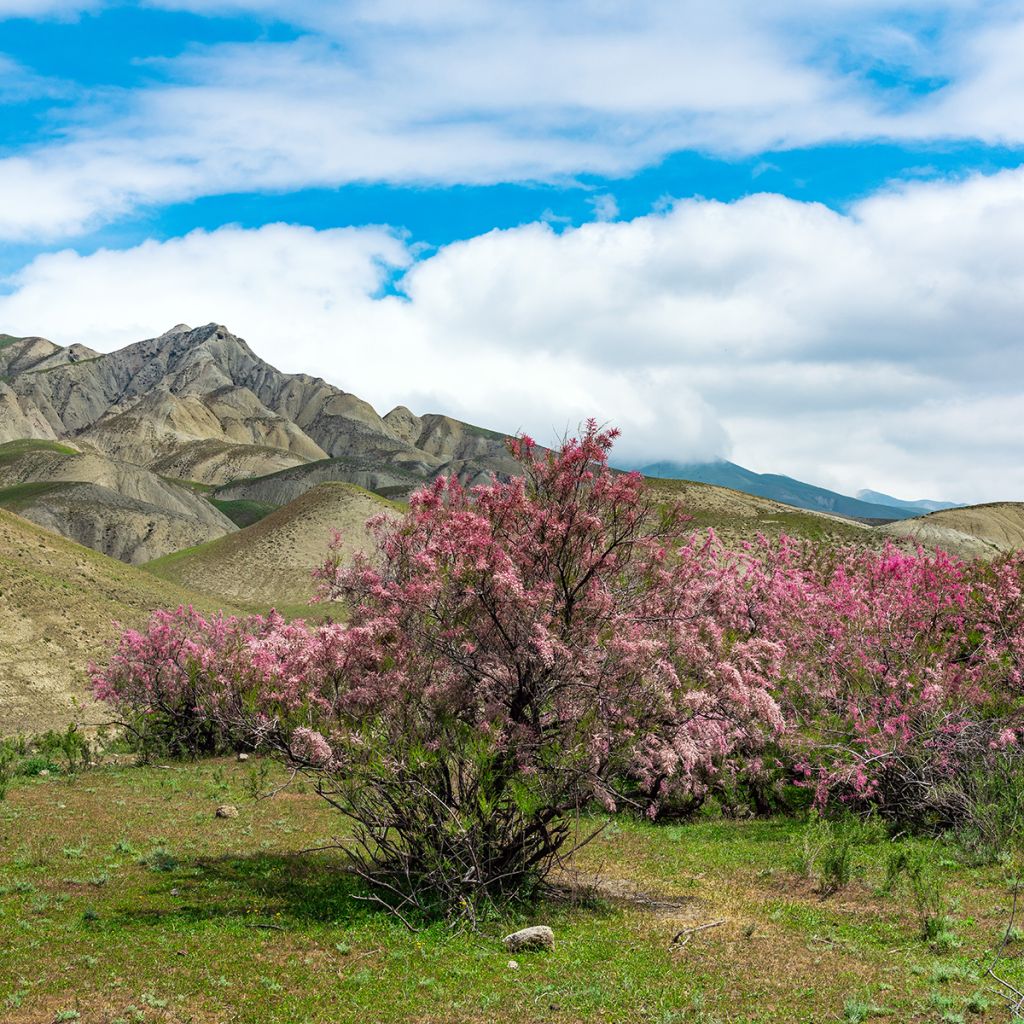

Tamarix gallica - Tamaris français, Tamaris commun
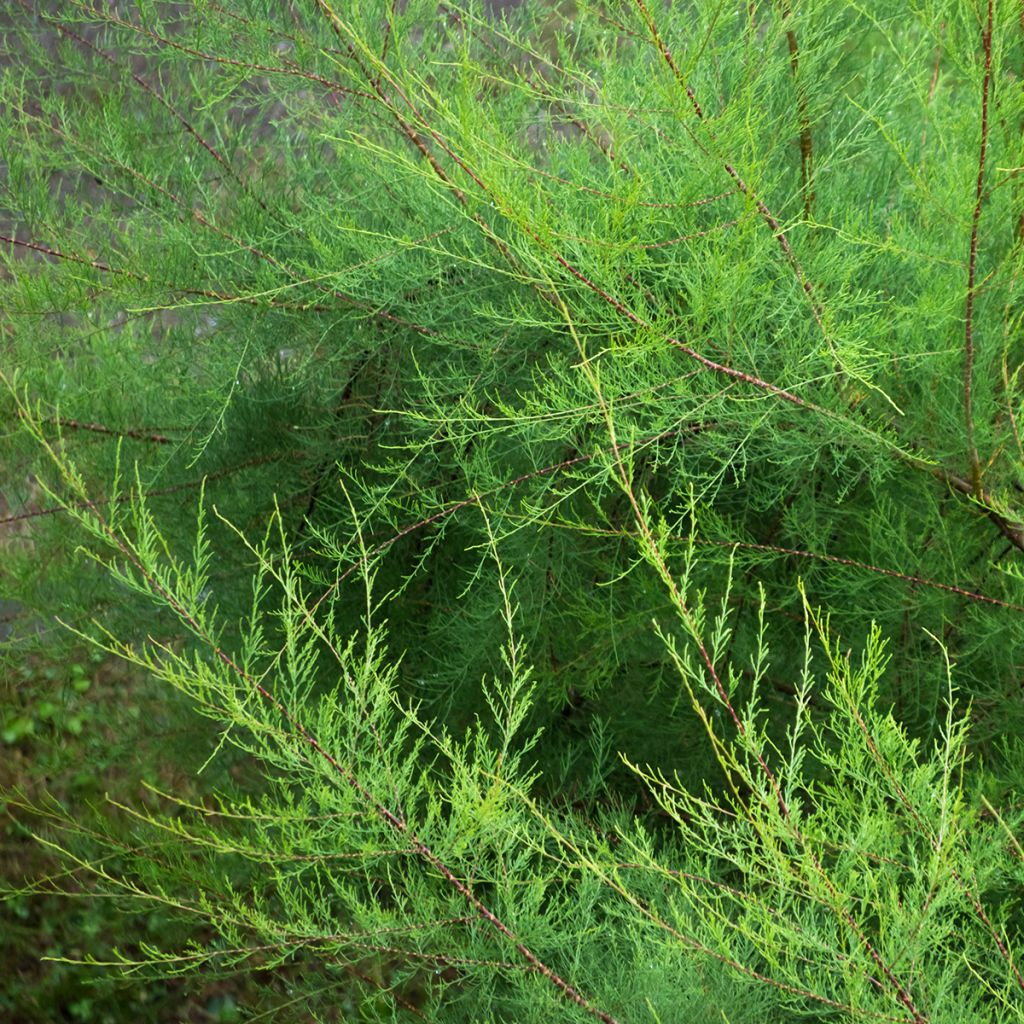

Tamarix gallica - Tamaris français, Tamaris commun
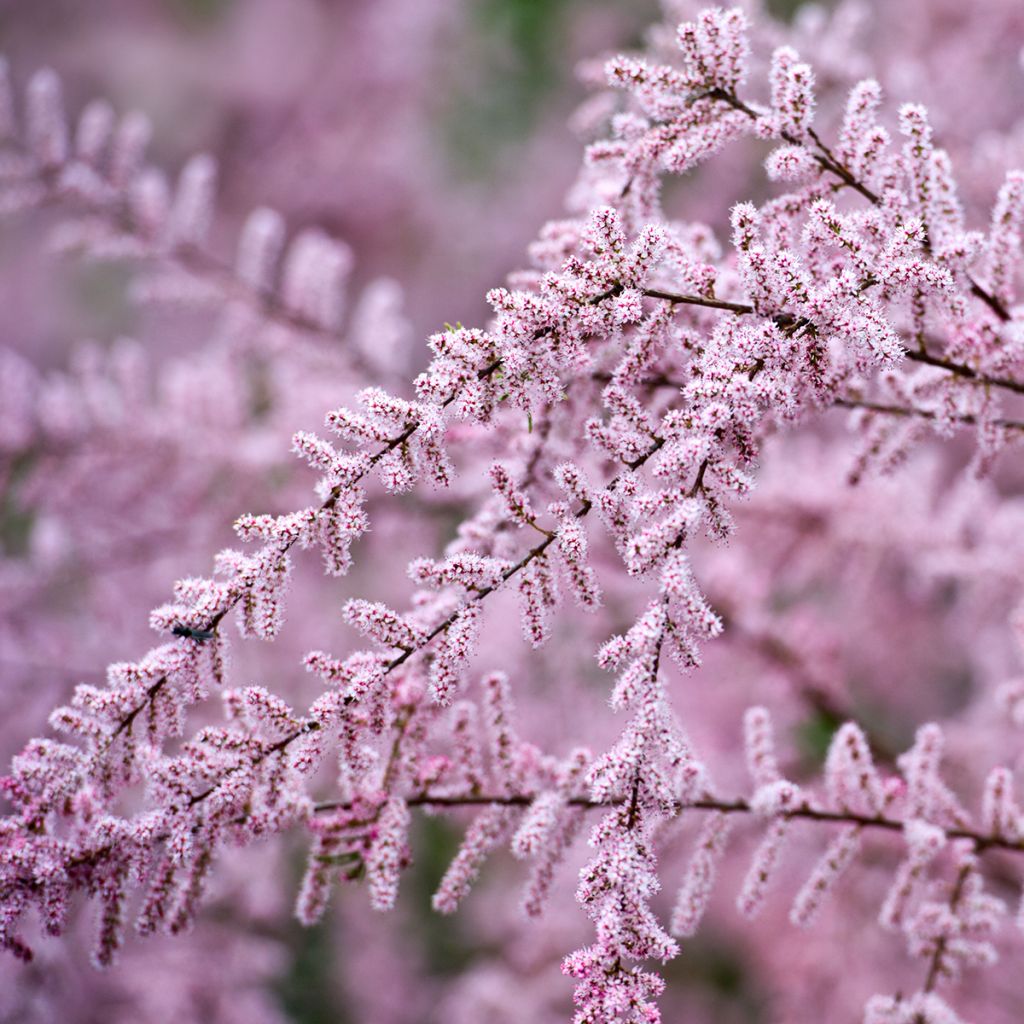

Tamarix gallica - Tamaris français, Tamaris commun
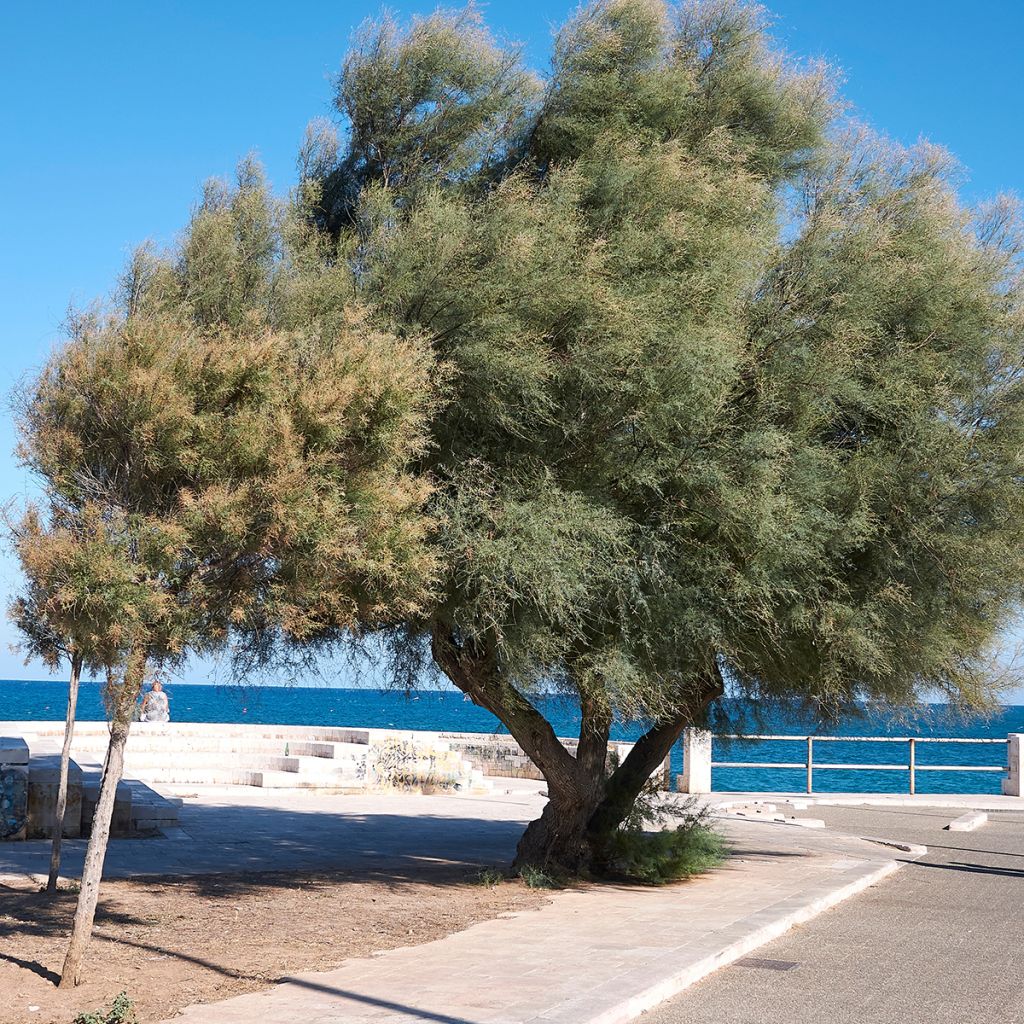

Tamarix gallica - Tamaris français, Tamaris commun
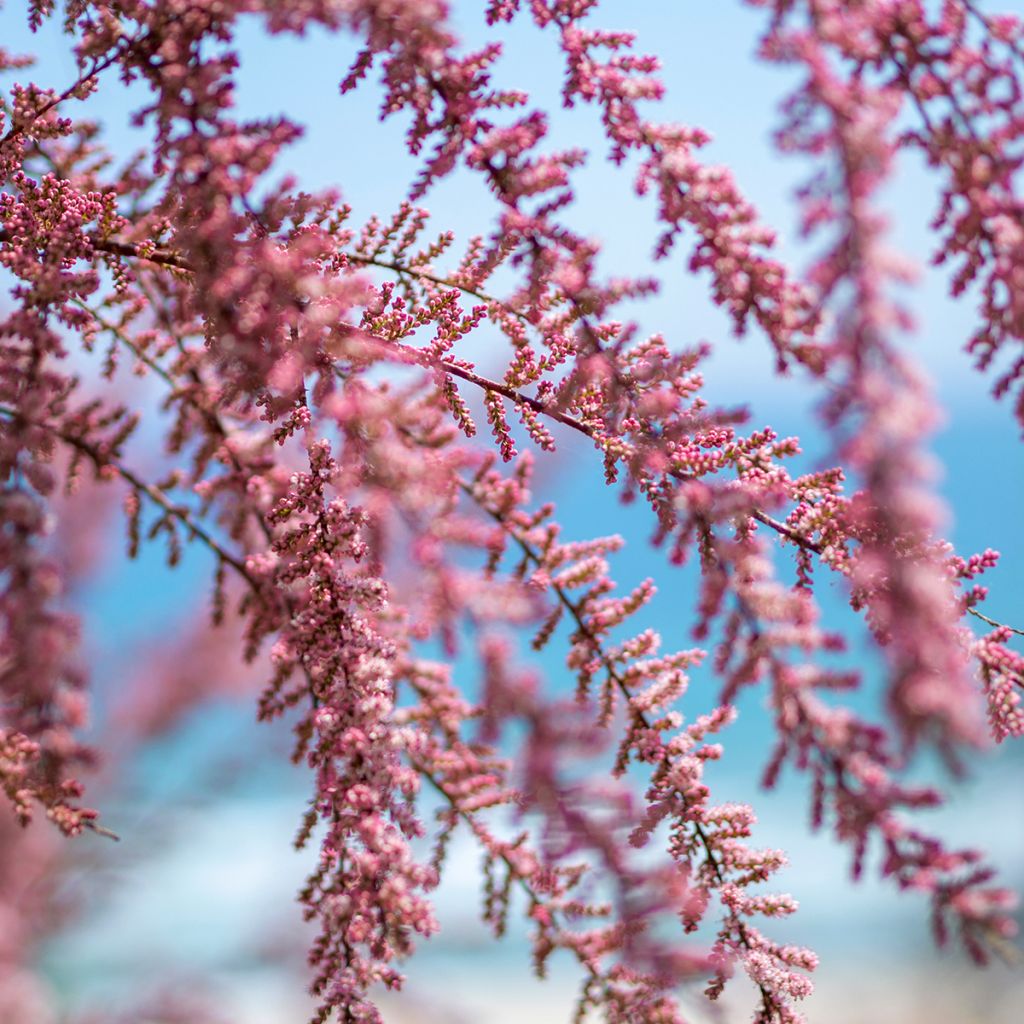

Tamarix gallica - Tamaris français, Tamaris commun
View more pictures
Hide images
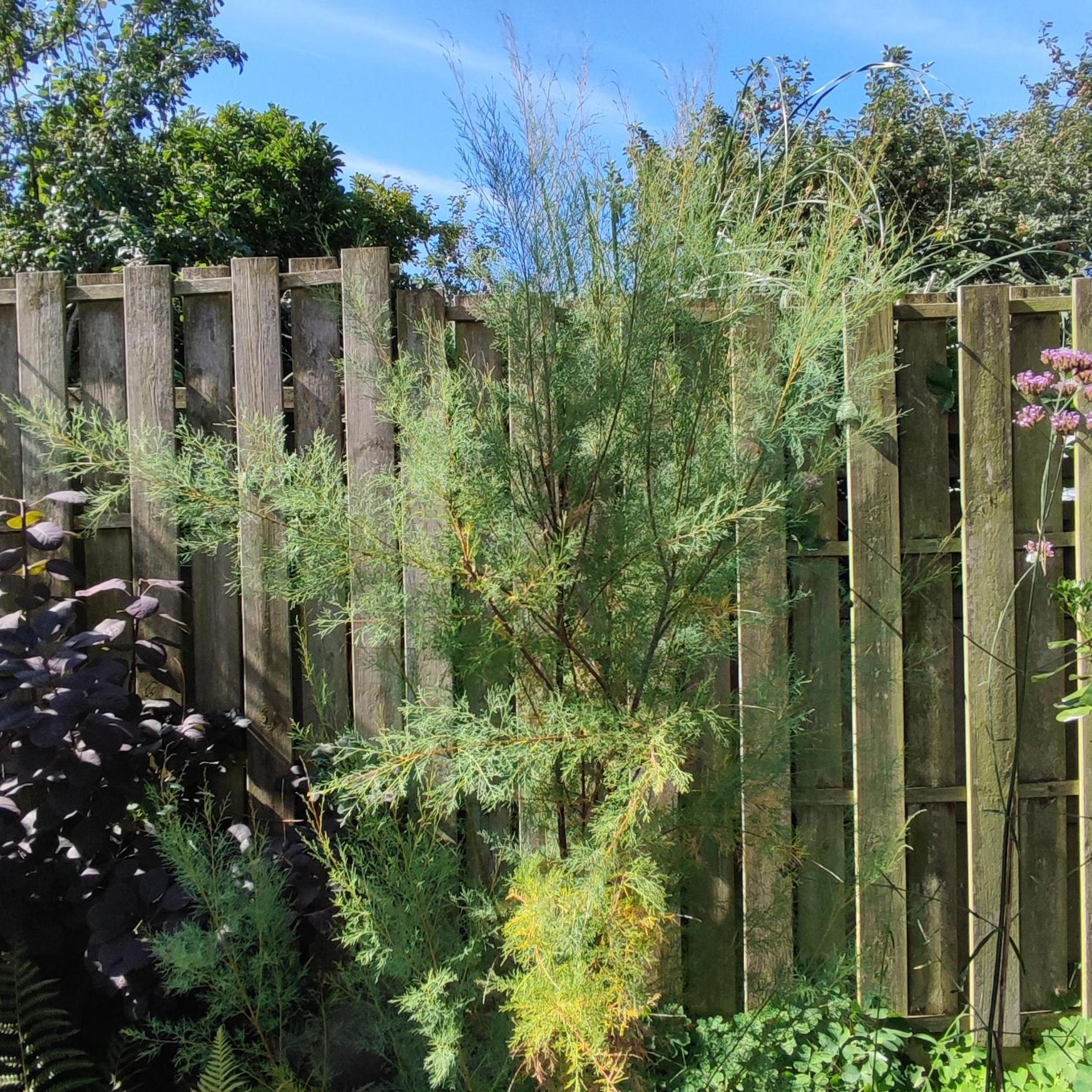
Vincent M.

Tamaris Gallica
Vincent M. • 62 FR
Tamarix gallica
Tamarix gallica
French Tamarisk, Gallic Tamarisk
Special offer!
Receive a €20 voucher for any order over €90 (excluding delivery costs, credit notes, and plastic-free options)!
1- Add your favorite plants to your cart.
2- Once you have reached €90, confirm your order (you can even choose the delivery date!).
3- As soon as your order is shipped, you will receive an email containing your voucher code, valid for 3 months (90 days).
Your voucher is unique and can only be used once, for any order with a minimum value of €20, excluding delivery costs.
Can be combined with other current offers, non-divisible and non-refundable.
Home or relay delivery (depending on size and destination)
Schedule delivery date,
and select date in basket
This plant carries a 24 months recovery warranty
More information
We guarantee the quality of our plants for a full growing cycle, and will replace at our expense any plant that fails to recover under normal climatic and planting conditions.
Would this plant suit my garden?
Set up your Plantfit profile →
Description
The Tamarix gallica, also known as the French Tamarisk or Gallic Tamarisk, is a large deciduous bush native to the Camargue, naturalized along all French coastlines, both along the Mediterranean and the Atlantic coast. This species is characterized by a superb delicate pink flowering in early summer, slender and reddish branches, and feathery foliage capable of excreting salt crystals. Particularly suitable for coastal gardens, as a windbreak hedge or as a solitary specimen.
The Tamarix gallica belongs to the Tamaricaceae family, like the other tamarisks. It is a large spreading bush, more or less dense, often a bit anarchic, growing in thickets and reaching an average height of 4 m (13ft) with a spread of 3 m (sometimes up to 7 m (23ft) in height depending on growing conditions). Exposed to coastal winds, the bush takes on a characteristic flag-like shape. Its root system consists of a long taproot that can reach up to 3 m (10ft) deep, and a widely spread network at the surface of the soil capable of producing suckers. This root system is very effective in stabilizing dunes and sandy soils. This small tree develops a gnarled trunk, its branching is very ramified, composed of slender and flexible reddish stems. Its foliage is composed of small scale-like leaves not exceeding 1.5 cm (1in) in length. This deciduous foliage appears in spring and falls in autumn. The presence of salt in the soil is the key to the drought resistance of this tamarisk, as it allows the plant to limit its transpiration. The salt exuded by the foliage crystallizes and falls onto the ground. Flowering occurs in June, on the current year's branches. Its abundance gracefully bends the stems, giving the vegetation a beautiful weeping habit. The flowers measure less than 1 cm (<1in), they are pale pink and are grouped in countless small clusters. This flowering is nectariferous.
Very easy to grow by the seaside, the French Tamarisk thrives near water, whether fresh or salty. Inland, when this resource is not available in depth, the bush may suffer from drought. Plant it as a solitary specimen, as a hedge or in a border, in the company of Griselinia, Spartium (Spanish broom), Atriplex etc. Prefer a sunny exposure to obtain a well-developed bush.
Tamarix gallica in pictures
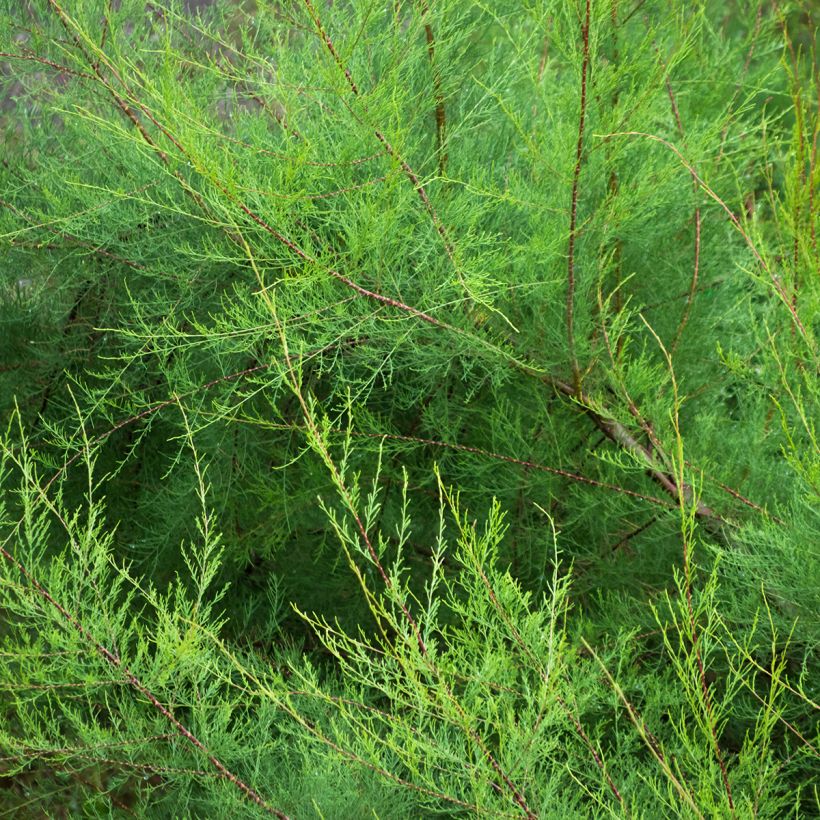

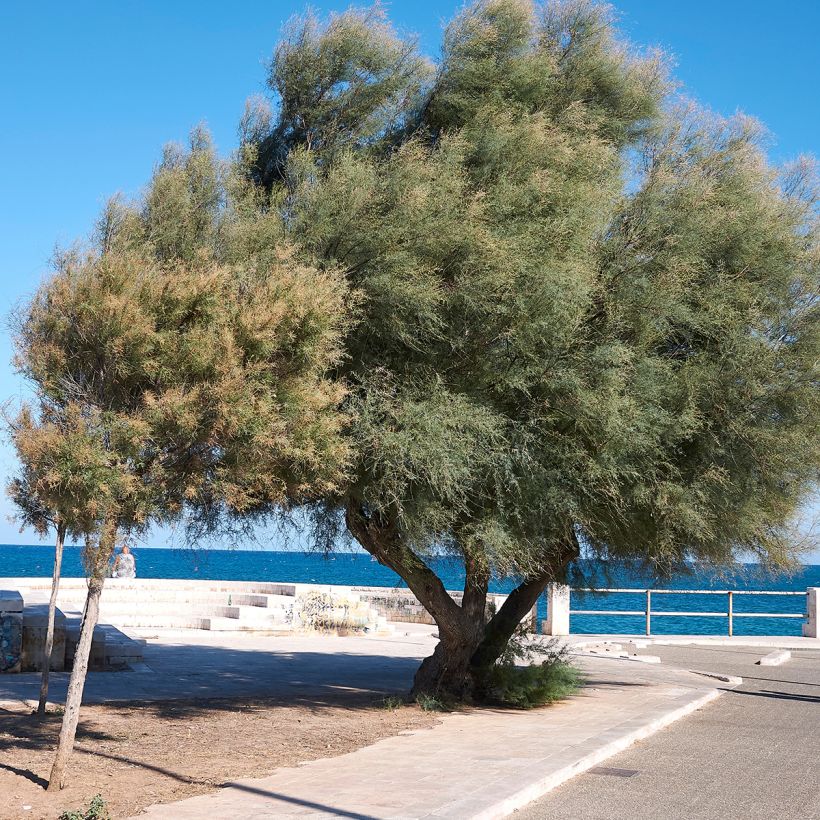

Plant habit
Flowering
Foliage
Botanical data
Tamarix
gallica
Tamaricaceae
French Tamarisk, Gallic Tamarisk
Western Europe
Other Tamarix - Tamarisk
View all →Planting and care
Plant the tamarisk gallica in coastal gardens or you can create dense windbreaks by severely pruning it into a bush. In coastal gardens or near watercourses, watering is unnecessary for well-rooted plants. However, inland, the bush can suffer from summer drought, especially in shallow and stony soils. The presence of limestone in the soil is well tolerated by this tamarisk. It prefers sandy, light soils that remain moist at depth. Its root system tolerates temporary flooding very well. For an even more abundant flowering, prune the tamarisk back every year in February, down to the level of the old wood.
Planting period
Intended location
Care
Planting & care advice
This item has not been reviewed yet - be the first to leave a review about it.
Similar products
Haven't found what you were looking for?
Hardiness is the lowest winter temperature a plant can endure without suffering serious damage or even dying. However, hardiness is affected by location (a sheltered area, such as a patio), protection (winter cover) and soil type (hardiness is improved by well-drained soil).

Photo Sharing Terms & Conditions
In order to encourage gardeners to interact and share their experiences, Promesse de fleurs offers various media enabling content to be uploaded onto its Site - in particular via the ‘Photo sharing’ module.
The User agrees to refrain from:
- Posting any content that is illegal, prejudicial, insulting, racist, inciteful to hatred, revisionist, contrary to public decency, that infringes on privacy or on the privacy rights of third parties, in particular the publicity rights of persons and goods, intellectual property rights, or the right to privacy.
- Submitting content on behalf of a third party;
- Impersonate the identity of a third party and/or publish any personal information about a third party;
In general, the User undertakes to refrain from any unethical behaviour.
All Content (in particular text, comments, files, images, photos, videos, creative works, etc.), which may be subject to property or intellectual property rights, image or other private rights, shall remain the property of the User, subject to the limited rights granted by the terms of the licence granted by Promesse de fleurs as stated below. Users are at liberty to publish or not to publish such Content on the Site, notably via the ‘Photo Sharing’ facility, and accept that this Content shall be made public and freely accessible, notably on the Internet.
Users further acknowledge, undertake to have ,and guarantee that they hold all necessary rights and permissions to publish such material on the Site, in particular with regard to the legislation in force pertaining to any privacy, property, intellectual property, image, or contractual rights, or rights of any other nature. By publishing such Content on the Site, Users acknowledge accepting full liability as publishers of the Content within the meaning of the law, and grant Promesse de fleurs, free of charge, an inclusive, worldwide licence for the said Content for the entire duration of its publication, including all reproduction, representation, up/downloading, displaying, performing, transmission, and storage rights.
Users also grant permission for their name to be linked to the Content and accept that this link may not always be made available.
By engaging in posting material, Users consent to their Content becoming automatically accessible on the Internet, in particular on other sites and/or blogs and/or web pages of the Promesse de fleurs site, including in particular social pages and the Promesse de fleurs catalogue.
Users may secure the removal of entrusted content free of charge by issuing a simple request via our contact form.
The flowering period indicated on our website applies to countries and regions located in USDA zone 8 (France, the United Kingdom, Ireland, the Netherlands, etc.)
It will vary according to where you live:
- In zones 9 to 10 (Italy, Spain, Greece, etc.), flowering will occur about 2 to 4 weeks earlier.
- In zones 6 to 7 (Germany, Poland, Slovenia, and lower mountainous regions), flowering will be delayed by 2 to 3 weeks.
- In zone 5 (Central Europe, Scandinavia), blooming will be delayed by 3 to 5 weeks.
In temperate climates, pruning of spring-flowering shrubs (forsythia, spireas, etc.) should be done just after flowering.
Pruning of summer-flowering shrubs (Indian Lilac, Perovskia, etc.) can be done in winter or spring.
In cold regions as well as with frost-sensitive plants, avoid pruning too early when severe frosts may still occur.
The planting period indicated on our website applies to countries and regions located in USDA zone 8 (France, United Kingdom, Ireland, Netherlands).
It will vary according to where you live:
- In Mediterranean zones (Marseille, Madrid, Milan, etc.), autumn and winter are the best planting periods.
- In continental zones (Strasbourg, Munich, Vienna, etc.), delay planting by 2 to 3 weeks in spring and bring it forward by 2 to 4 weeks in autumn.
- In mountainous regions (the Alps, Pyrenees, Carpathians, etc.), it is best to plant in late spring (May-June) or late summer (August-September).
The harvesting period indicated on our website applies to countries and regions in USDA zone 8 (France, England, Ireland, the Netherlands).
In colder areas (Scandinavia, Poland, Austria...) fruit and vegetable harvests are likely to be delayed by 3-4 weeks.
In warmer areas (Italy, Spain, Greece, etc.), harvesting will probably take place earlier, depending on weather conditions.
The sowing periods indicated on our website apply to countries and regions within USDA Zone 8 (France, UK, Ireland, Netherlands).
In colder areas (Scandinavia, Poland, Austria...), delay any outdoor sowing by 3-4 weeks, or sow under glass.
In warmer climes (Italy, Spain, Greece, etc.), bring outdoor sowing forward by a few weeks.






























